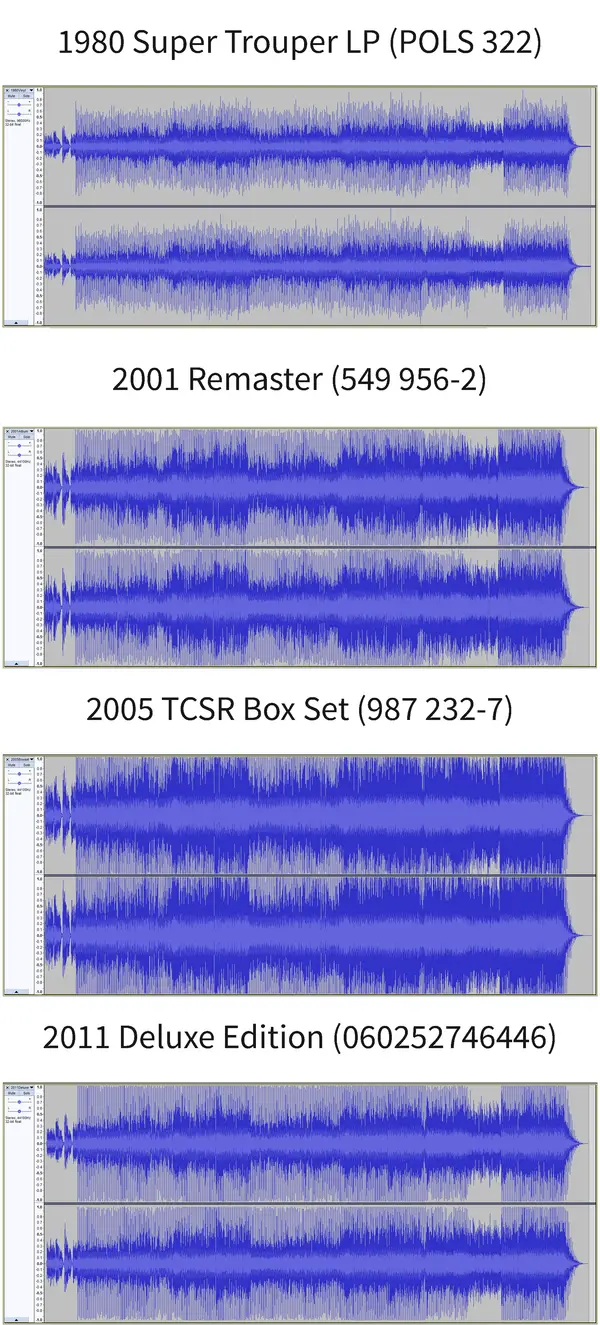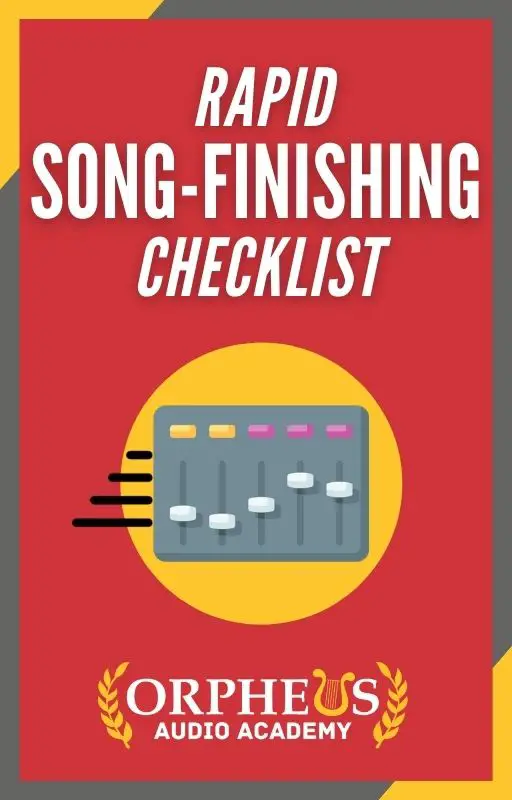Ever been working on a mix or mastering a song only to stop and wonder...
"Hey, how loud am I supposed to be making this, anyway?"
Correct volume levels are key for creating a professional-sounding track that fits well on the various streaming platforms, and stacks up against the competition.
So, how loud should your mix be? How loud should your master be?
Shoot for about -23 LUFS for a mix, or -6db on an analog meter. For mastering, -8 LUFS is the best, as that's what most of top charting songs average. Many will say -14db as it will fit the loudness targets for the majority of streaming sources, but it's okay to go louder (-7 to -10) so that your music stacks up well on other mediums.
With these targets, you're good to go! But if you want to know a little bit more about why these are your targets, and what exactly LUFS are/means, then keep reading...
Why Is My Mix So Quiet?
Most likely, your mixes are too quiet because you haven't placed a limiter or limited properly, or your average sound level (Loudness Unites relative to Full Scale--LUFS) is too low.
In order to make your mix sound louder, be sure to place a limiter at the end of your signal chain, and monitor your LUFS, and make sure you're hitting the right sound targets.
How Loud Should My Mix Be?
How Much Headroom Should You Leave For Mastering?
If you boosted 3khz on records it would sound better on the radio and people would enjoy these records more.
As a result, this sparked something called the "loudness wars" in the late 90s and early 2000s. Essentially engineers were competing with one another to get the loudest tracks possible.
Inevitably, people began to realize that super loud music, lacking in dynamic range, just wasn't as pleasing to hear as must that had more dynamics.
In other words, music sounds better when it changes over time, and has some loud parts and some quiet parts.
You can see an example of this history in the image below.


Create Better Songs, Faster
Click below to download my free song-finishing checklist to help you create radio-ready songs without taking months to complete them.
With loudness no longer as important as it once was, you should instead focus on just creating a good sounding mix, rather than a loud one.
With that said, shoot for about -23 LUFS for a mix, or -6db on an analog meter.
How Loud Should Your Master Be?
Now that you know how loud your mix should be, what should your target be for mastering?
Well, more likely than not, your music is going to be listened to the most on a streaming platform.
Here is a chart breaking down the loudness targets for the major streaming platforms:
Platform | Peak dBTP | Loudness LUFS | Dynamic Range |
|---|---|---|---|
Spotify | -1.0 | -13 to -15 | >9 |
Apple Music | -1.0 | -16 | >9 |
Amazon Music | -2.0 | -9 to -13 | >9 |
YouTube | -1.0 | -13 to -15 | >9 |
CD | -0.1 | > -9 | >9 |
Soundcloud | -1.0 | -8 to -13 | >9 |
Safe For All | -2.0 | -13 to -15 | >9 |
So How Loud Should I Master My Music?
You may or may not like to hear this since it's pretty subjective, but you should master your music so that it sounds great to you!
But if you want a good level to aim for...
-14 LUFS is the best mastering level for streaming, as it will fit the loudness targets for the majority of streaming sources. I would also aim for -0.2 db PEAK level.
However, it's still a good idea to go a tad louder (-7 to -10 LUFS) so that your music will still sound loud on other mediums and platforms.
Therefore, if you only pick one loudness target, you should aim for roughly -8db LUFS.
The key takeaway here is don't want to squash your track. Instead, maintain the dynamics while making your track relatively loud.
Just Keep In Mind...
Use a reference
Use a references of some of your favorite songs while mastering and level match.
So long as your song sounds similar to what is already out there and successful, you're good.
You'll get turned down if
It's louder than -14 LUFS. Therefore, going for a more dynamic and punchy mix will sound better than an over-compressed master. Aim for no louder than -7 short-term LUFS during the loudest part of the song when mastering for Spotify.
-1dBTP
Spotify suggests leaving at least -1dBTP of headroom when submitting music so they're optimized for the lossy formats. They suggest -2dBTP of headroom for loud track, as loud tracks have a greater chance of clipping during transcoding.
Don't be too quiet
Don't master too quiet! Amazon music turns louder songs down, but doesn't currently the quiet tracks up. You wouldn't want your song to lack energy compared to the other tracks, so try to keep the overall integrated LUFS value at -16 LUFS or louder.
What's The Difference Between dBFS, LUFS, RMS, and Peak Level

Now, if you're confused about what all of these different metering terms mean, here is a quick guide.
True Peak
A maximum absolute level of the signal waveform. It measures the peak levels of samples and intersample peaks.
RMS
Root mean square. The average power of your audio signal, and close to what your ears perceive as the loudness of your audio.
dBTP
dB True Peak. The scale is actually dBFS, but measured with a true peak meter. dBTP refers to the peak amplitude of a signal compared with the maximum which a device can handle before clipping occurs. In digital systems, 0 dBTP would equal the highest level (number) the processor is capable of representing. Measured values are always negative or zero, since they are less than or equal to full-scale.
LUFS
Loudness units relative to Full Scale. This is a loudness standard designed to enable normalization of audio levels. Loudness Units (or LU) is an additional unit. It describes loudness without direct absolute reference and therefore describes loudness level differences. For instance, the difference between -23 LUFS and -18 LUFS is 5 LU.
ConClusion
The standard for measuring audio loudness is LUFS, as it was developed to enable normalization of audio levels.
It also matches how our ears actually perceive sound.
You might assume RMS would be the way to go, but LUFS meters will also tell you the integrated loudness of your audio, which is similar to RMS, but more truthful in terms of our hearing.
RMS tells you the average power of the signal, whereas LUFS is more accurate in terms of our perception of loudness.
And since you are making music for humans and not robots, you'll want to use LUFS as your guide.
Alright, with all that technical stuff out of the way, let's actually dive in to how you can make your song louder without losing quality.
Conclusion
How loud should my mix and master be?
Here are a few simple targets to aim for...
Finish More Songs, Faster
Of course, creating a sufficiently and pleasantly loud track is only one part of creating professional-sounding songs.
If you want to finish more radio-ready songs, and complete them faster without having to spend months or even weeks on end working on the same songs over and over, not even knowing if you're making them any better...
Then grab my free Rapid Song-Finishing Checklist below.
You'll discover a proven step-by-step system for completing professional-sounding songs.

Create Better Songs, Faster
Click below to download my free song-finishing checklist to help you create radio-ready songs without taking months to complete them.
This will be especially beneficial if you find yourself working on songs for hours on end only to look back and wonder if you actually made your track any better.
I hope you got value from this post on, How To Make Your Mix Louder Without Clipping Or Distorting!
If so, feel free to share it, and let me know in the comments below...
